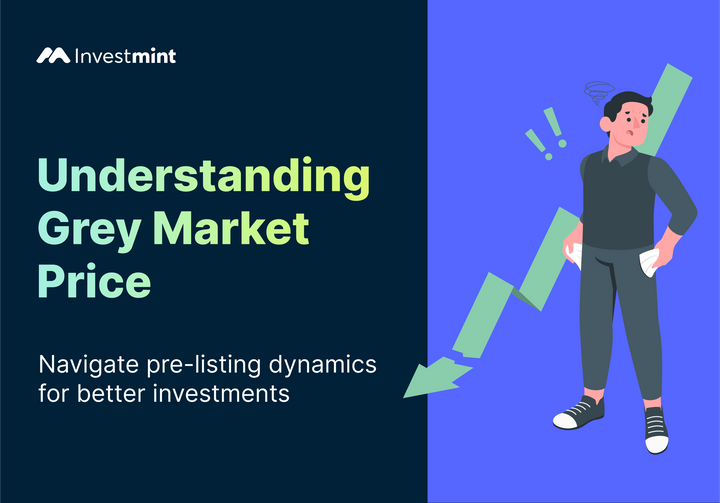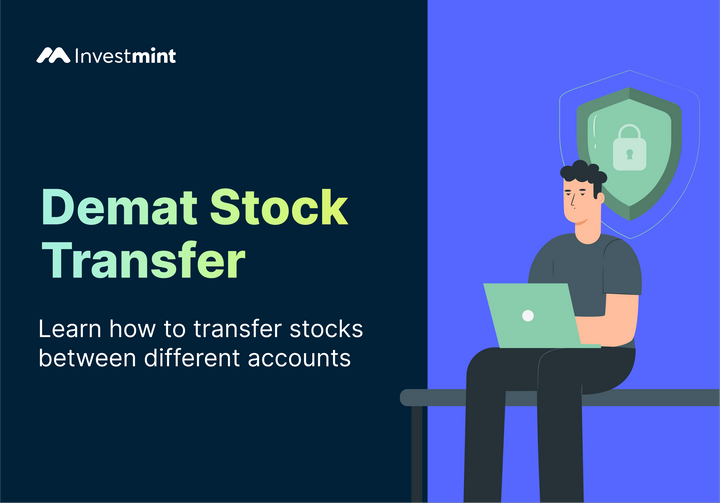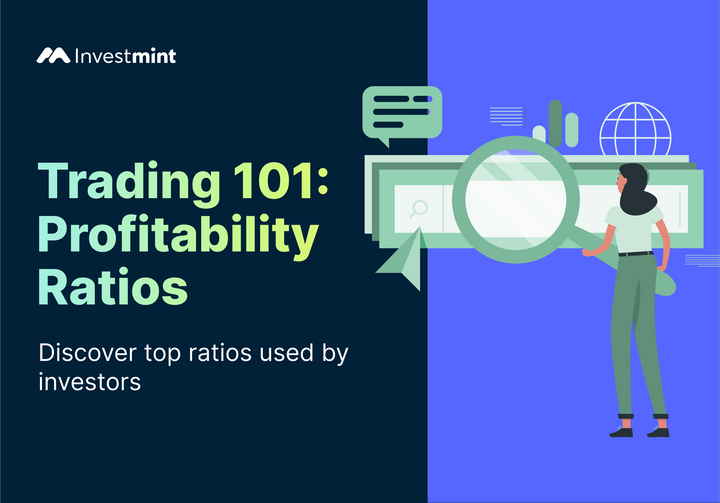Everything You Need to Know About Index Futures
Learn about index futures trading in India, including how they work, their history, and the difference between spot and futures prices.

Introduction
Trading in the stock market requires certain know-how to be able to succeed. If you’ve heard of stock trading, chances are that you have heard of an index. A stock market index, like the Nifty or Sensex, is a basket of stocks that helps gauge the general movement of prices in the market. When the Nifty or Sensex is trending upwards, you can fairly assume that the health of the stock market is good. Similarly, the opposite is also true.
Once you understand what an index is, you can then explore index futures as a potential investment opportunity.
What Are Index Futures?
An index futures contract allows you to buy or sell a contract derived from a financial index. You enter the contract today to be settled on a future date at a predetermined price. With stock index futures, you can profit from broad price changes just like any other futures contract.
Traders use index futures for a range of things, from protecting themselves from potential price changes in the underlying equity index to speculating on the index's gains or losses.
How Do Index Futures Work?
Stock index futures work like any other futures contract. Let’s say, you think that the Nifty index will move up by 500 points. Keeping this in mind, you buy 100 Nifty index futures at ₹17,000 each. In a month’s time, NIFTY moves up to 17,500. Since you have bought a Nifty futures contract, you can then exercise the futures at ₹17,000 and pocket a profit of ₹50,000!
Of course, if the index had moved in the opposite direction, and hitting 16,500, you will be forced to exercise the contract at ₹17,000, making a loss of ₹50,000.
History of Index Futures in India
One of the financial market developments in the Indian market has been index futures. Index futures give the investment portfolio a great deal of flexibility, allow for speculative gains utilising leverage (with minimal capital outlay due to the margining mechanism), and can even be used as a stand-in for future stock or mutual fund transactions.
On June 12, 2000, India index futures were introduced, marking the beginning of derivatives trading on the National Stock Exchange of India Limited (NSE). The well-known benchmark Nifty 50 Index serves as the basis for the futures contracts.
Additionally, the exchange now offers Index trading in futures and options contracts based on indices. Now, traders can trade derivatives for the NIFTY 50, NIFTY Bank, NIFTY Financial Service, and NIFTY Midcap Select.
This section gives you information on the NSE's derivatives market. You can access real-time index futures and data about derivative products, trading systems, procedures, clearing and settlement, risk management, statistics, etc.
The National Stock Exchange of India Limited (NSE) has advanced with a diverse product offering in equity derivatives since the inception of the Index Derivatives on the well-known benchmark Nifty 50 Index in 2000. The Exchange now offers index trading in futures and options contracts on more than 100 equities and 4 significant indices.
Spot vs. Futures
Spot and futures prices primarily differ in that spot prices are used for immediate buying and selling, while futures contracts postpone payment and delivery to defined future periods. Usually, the futures price is lower than the spot price. Contango is the term used to describe the situation. For non-perishable items with high storage costs, contango is relatively standard.
On the other hand, backwardation refers to a circumstance where the spot price is higher than the futures price. In either case, it is anticipated that the futures price will eventually match the current market price.
Understanding Index Futures
Index futures give you, like other futures contracts, the authority and duty to deliver the contract's cash value based on an underlying index at a subsequent date. Unless the contract is unwound before expiration by an offsetting deal, the trader is required to provide the cash value at expiration.
An index is a way to gauge the value of a single asset or a group of assets. As derivatives, index futures are based on an underlying asset (the index). With the use of these items, traders can trade a variety of investments, including stocks, commodities, and currencies. Investors can purchase or sell index futures to wager on the index's growth or decline.
Premium vs. Discount in Futures
In the market for stock derivatives and commodities derivatives, respectively, a futures contract is considered to be in premium or contango if it is trading above the spot price. These words imply that the contract is trading above its spot price.
Premium: Future price – Spot price
In the same way, a futures contract is trading below the spot price, referred to as being in backwardation in the market for commodities derivatives and at a discount in the market for equity derivatives.
Discount: Spot value – Futures price
For Example, Nifty is trading at 5000, and Nifty futures is trading at 5050. Here, Nifty is trading in a Premium of 50 points (5020-5000) = 50
Now, if the situation is Nifty is trading at 5000, and Nifty futures is trading at 4990. Here, Nifty trades at a discount of (5000-4990) = 10 points.
How to Interpret Premium & Discount in Futures?
There are some common market strategies for premium and discount in the Futures market.
- In the case of widens Discount, the Bearish market increases.
- In the case of widens Premium, the Bullish market increases.
- At the closing date of futures, Premium and Discount converge to zero.
Types of Index Futures
- Nifty 50: 50 underlying securities make up the NSE's Nifty index.
- Nifty Bank: Bank shares make up this index.
- Nifty IT: Here, information technology shares make up the underlying securities.
- S&P BSE Sensex: 30 underlying securities make up the BSE's Sensitive Index or Sensex.
- S&P BSE Bankex: These futures consist of banking stocks listed on the Sensex.
- S&P BSE Sensex 50: This index includes 50 stocks instead of the 30 that make up the Sensex.
- S&P BSE Bharat 22 Index: This index comprises 22 central public sector enterprises (CPSE).
- Others: You can also trade in these futures from foreign stock exchanges, for example, Standard & Poor's 500 and FTSE 100 futures, on Indian exchanges like the NSE.
Key Components of Index Futures
The two most popular index futures in India are Nifty50 and Bank Nifty. Index futures have four essential components, much like any other futures contract:
1. Lot size:
The term "lot size" describes the bare minimum of units necessary to constitute a single contract. Since futures contracts are always traded in multiples of lots, it is the smallest unit of shares we can purchase or sell before entering a contract. The Nifty50 contract has a lot size of 50, which means that 50 shares of the Nifty50 are represented by one Nifty50 contract. Exchanges decide the lot size, which varies for all securities and asset classes.
2. Total Contract value:
Multiplying the lot size by the contract's price yields the entire contract value. Assume that the Nifty50 futures are trading at 16,000 at the moment and that the index's lot size is 50. As a result, Nifty50's total contract value (lot size * current price) will be 8,00,000. It is essential to remember that the lot size must be multiplied by the futures price, not the spot price, to determine the entire contract value.
3. Margin:
Exchanges impose margins to safeguard buyers and sellers from counterparty risk. To put it simply, preventing payment defaults. A specific percentage of the total contract value is charged to the buyer and the seller; this percentage is determined by the exchange based on the volatility and price movement of the underlying.
4. Expiry:
The date that the contract between the buyer and the seller is still in effect is known as the expiry or expiration date of the futures contract. For instance, the Nifty50's futures contracts are offered for a maximum of three months—the first, second, and third months. The futures contract expires on the final Thursday of each month. All contracts are settled on the prior trading day if last Thursday is a holiday.
Who Trades in Index futures?
In Index futures, there are primarily two different categories of traders.
People who are interested in protecting themselves from changes in share prices make up one group. To insure against possible losses, a portfolio manager might trade in these. They can decide to sell these futures contracts at a higher price to make up for losses if the prices in a portfolio fall. Such hedging, though, will hurt total revenue.
Speculators are a different category of players in this market. Since risks are dispersed across a broad basket of shares, many speculators find that futures are significantly better than individual stocks. Indices futures are usually moving upward in economies that are expanding.
How Index Futures are Traded
Let's use an example to understand better how to trade index futures.
Mr. Satya, a trader, has an optimistic outlook on the markets. He purchases one lot of Nifty50 futures at a price of 25,010 before the month's expiration. Assume that the Nifty50 spot price is 24,990.
Example 1 :
Nifty rises to 25,200.
In this situation, Mr. Satya's point of view proved to be accurate. Since the Nifty50 spot price increased, the futures contract price will also rise. Mr. Satya will therefore receive a net profit of 9,500 from this contract.
Profit/loss = (selling price – entry price) * lot size = (25,200 – 25,010) * 50 = ₹9,500
Example 2:
Nifty50 closed at 25,010 with no change.
Mr. Satya's viewpoint, in this case, was untrue. His entry price was 25,010 for the Nifty50 spot, which closed at that price on expiration. Both Mr. Satya and the seller won't benefit or lose money in this situation.
Profit/loss = (selling price – entry price) * lot size = (25,010 – 25,010) * 50 = ₹0
Example 3:
Nifty50 slips to 24,800.
Mr. Satya could not correctly interpret the market movement since his interpretation of the index in this situation needed to be corrected. As a result, Mr. Satya will suffer a loss and must give the seller 24,800 on expiration.
Profit/loss = (selling price – entry price) * lot size = (24,800 – 25,010) * 50 = - ₹10,500
Summary
- A stock market index is a basket of stocks that helps gauge the general movement of prices in the market.
- An index futures contract allows you to buy or sell a contract derived from a financial index.
- The first index futures in India were introduced on June 12, 2000 on the National Stock Exchange. The Nifty 50 Index served as the basis for the futures contracts.
- Index futures give you, like other futures contracts, the authority and duty to deliver the contract's cash value based on an underlying index at a subsequent date.
- Index futures are used for hedging risk and speculating.
Investmint app brings you the latest stock market updates. Ensure you capture today's opportunities by tapping below.



